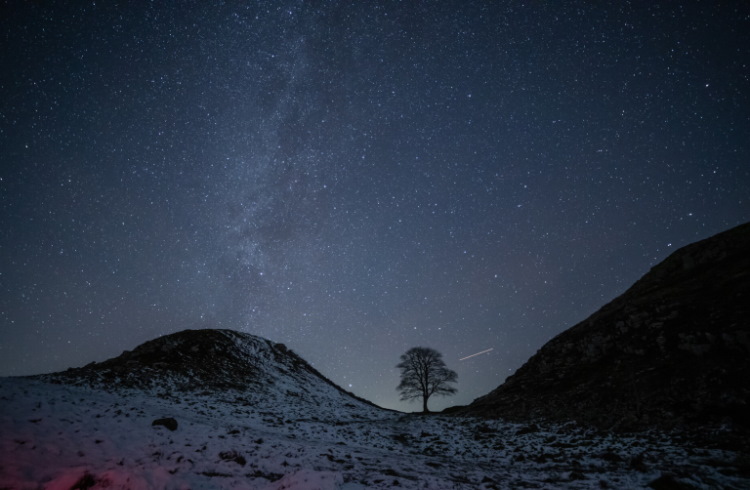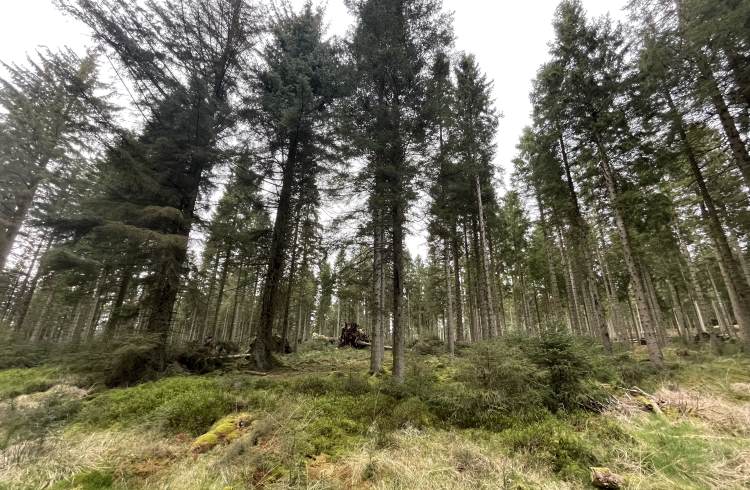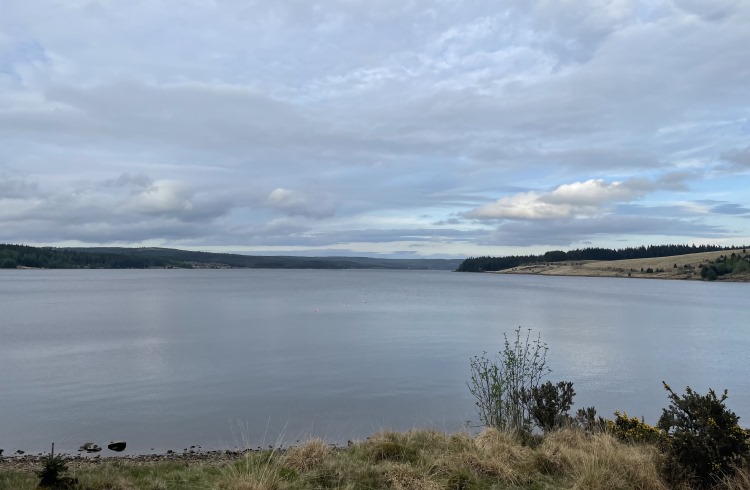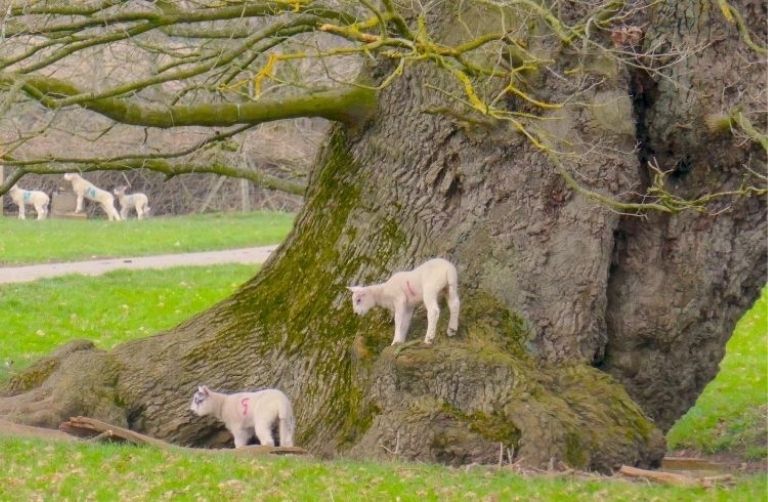Stargazing in Northumberland International Dark Sky Park
Located in northern England, Europe's largest Dark Sky Park is now a key site for ‘astro tourism’ – but it’s also home to England’s largest forest, filled with hiking trails and opportunities to spot wildlife. Nomad Neil McRobert shares his experience.
 Photo © Simon McCabe / Northumberland National Park
Photo © Simon McCabe / Northumberland National Park
- Kielder Water and trails
- Ospreys, squirrels, and roe deer
- Kielder Observatory on Black Fell
- Trip notes
After years of camping trips, I thought I knew what a dark night looks like. A few stars overhead, the murky glow of distant streetlamps; the dull opacity of night in semi-rural England.
It took one night in Northumberland in May 2022 to realize how wrong I was.
In 2013, Northumberland National Park, and most of the adjacent Kielder Water and Forest Park, was awarded Dark Sky Status by DarkSky International. Across a combined 580mi2 (1,500km2) of lake, forest, mountains, and moorland, light pollution has been beaten back, leaving a pristine, pin-pricked blanket of blackest night sky above. It is the largest Dark Sky Park in Europe. There are few places in the world more perfect for stargazing.
On the first night, from behind our rented farmhouse, my wife and I traced The Milky Way and debated whether a solitary light was a rare sighting of Jupiter. It was easy to imagine mankind, in all the millennia before the dawn of electric light, peering up at the sky and wondering.
When the morning comes Northumberland is revealed. It’s a raw part of the world, full of resilient wildlife and hardy architecture. The valleys and moors are speckled with villages and the occasional lone farmhouse. Gaunt castles glare down on some of the most unspoiled beaches in the country. Hadrian’s Wall remains, a broken border to the north.
The night always comes; but first, the day.
Kielder Water and trails
The largest man-made lake in Northern Europe, Kielder Water was completed in 1981, to answer the increased industrial demand for water. If that sound dispiritingly artificial, have no fear; the surrounding forest is the largest in England, home to an abundance of wildlife, and interspersed with art installations, like secret little gems strung amongst the trees.

For the hiking-inclined, the entire 28mi (45km) shoreline is ringed with a huge variety of interconnecting trails. It’s possible to complete a short out-and-back loop from one of the main tourist hubs, or to cover a sizeable distance along the shore. I tried to run the entire shoreline, but heavy storms in 2021 have brought down trees, closing paths and forcing me to turn back. Once it’s fixed, I’ll be back, because the stark pine forests offer the skin-tingling sensation of complete isolation, with the reassurance of knowing you are never more than a short dogleg from a main road.
Ospreys, squirrels, and roe deer
Despite its stark landscape, Northumberland is a haven for wildlife – everything from seals and puffins on the coast, to wild, homicidal cattle at Chillingham Castle. Kielder, in particular, is the epicenter of two unique British conservation projects. First, it is the home of England’s biggest Red Squirrel population. There are other, more controlled places to spot the chubby little ginger fellows in the UK, but in Kielder you simply have to keep an eye out when walking the trails.
Less cute but more regal are the Ospreys. For 14 years, Kielder Forest has staged one of England’s most successful breeding programs. In 2021, the breeding pairs increased to seven, with 16 offspring produced. Nesting poles around the lake have been fitted with high-res cameras. I stood watching one outside Kielder Castle, transfixed, as a dot grew into a shadow and then a full-grown Osprey alighted inches from the lens.
Touchingly, I was told by the enthusiastic owner of a nearby catering van that it was the first year in which offspring were bred from birds that were themselves born in Kielder.

Kielder Observatory on Black Fell
As night draws down at Kielder Castle, visitors follow 3mi (4.8km) of winding access track through the pine forest, to emerge atop Black Fell. That’s where the wooden observatory structure sits, looking at once part of the natural landscape, and like something discovered on an alien world.
Kielder Observatory is the most famous observatory in the Dark Sky Park. Completed in 2008, it’s now a key site for promoting ‘astro tourism’ in the area, with hundreds of events taking place every year. Popularity has grown so intense that annual visitors are now limited to 20,000 and booking in advance is highly recommended.
Those lucky enough to visit at night can search the skies from the two observing turrets, or the open-air deck. Each is equipped with high-grade telescopes (the technicalities of which are far better explained by the experts on site).
There are regular special events, but it was magical enough to be there for a ‘standard’ evening. The three-hour session features a tour and a themed lecture, but it’s the telescope and the naked night sky that draws everyone’s attention. Even in late spring, with the sun hanging on well into the evening, the stars were dizzying. I can only imagine what it’s like to gaze up at them in the pitch-black depths of winter.
Afterwards, my wife and I drove back along the lake to the cosiness (and spookiness) of our isolated farmhouse. The headlights felt like a feeble affront to the purity of the darkness around us.

Trip notes
Getting to and around Northumberland
Navigating Northumberland by public transport is straightforward. Rail links from the north and south serve Newcastle and several bigger towns, and from there connecting services link with smaller towns such as Haltwistle and Corbridge. There is also excellent bus coverage between the various market towns and out to the coast.
However, if you’re there for the dark skies and the empty spaces, Northumberland is best explored under your own steam. A car, or even a bicycle, will open the county for a more personal experience. Most of my journey was focused on the area around Kielder Water.
When to go
The best time for stargazing is in autumn and winter, when the skies are darker for longer. However, this means visiting out of the typical tourist season, so be aware that fewer amenities will be available – including many of the tourist hubs ringing Kielder Water.
Also, be sure to book ahead if you wish to visit any of the Dark Sky Observatories for the evening. Ticket prices vary but are generally around £20-45 per person.
Related articles
Simple and flexible travel insurance
You can buy at home or while traveling, and claim online from anywhere in the world. With 150+ adventure activities covered and 24/7 emergency assistance.
Get a quote

No Comments